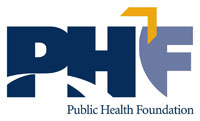Public health careers are as much concerned with safety and environmental wellbeing as they are with medical services. This aspect of the health sector is also experiencing the same growth as the medical field. Concerns about better prevention of illnesses and safety hazards are creating new jobs which monitor sustainable function for a population.
The job of a nuclear facility designer combines these concepts, but also considers public health needs in term of the generation of energy. This position sees communities as an entire organism and addresses concerns that can directly and indirectly affect wellness. If you are interested in a growing career position that addresses a variety of public health considerations, then a job as a nuclear facility designer can offer you an exciting position
What Is A Nuclear Facility Designer?
A nuclear facility designer is responsible for coming up with better engineering strategies for nuclear power plants. This will include design changes as well as protocol alterations. This position will also require that materials used to create nuclear power are researched and that waste management for these plants is also evaluated. Strategy and protocol will also be a part of the design process, as will preventive and interventive measures that are intended to ensure public health and safety
Nuclear facility designers are responsible for the following duties to perform their job:
- Develop equipment for nuclear reactors so as to promote sustainability and public safety.
- Maintain established nuclear plants to ensure that they are within health and safety regulations.
- Create strategies for safe operations and appropriate removal of waste.
- Test substances to be used in reactors for safety and viability.
- Investigate accidents and malfunctions to generate preventive protocols.
Characteristics
Professional skills are also important when pursuing a career as a nuclear facility designer:
- Communication: You will not only need to be able to report your observations to plant managers and regulatory boards, but you will also need to educate professionals and the public regarding safe operations and possible health hazards.
- Critical thinking: You will need to be able to analyze data and historical events in order to extrapolate possible outcomes that should be addressed.
- Math proficiency: You must have impeccable math skills for performing calculations regarding radioactive output, breakdown, and the future effects on the public.
- Problem solving skills: You must be able to come up with viable solutions to prevent possible hazards and to ensure public safety..
Nature Of The Work
Much of the work that a nuclear facility designer does is in an office setting. This will include analyzing and recording data, making calculations, and projecting outcomes. You will also be responsible for creating reports, prevention strategies, and informational manuals based on your research.
Some of your work will also be in the field. This may include consulting with parts manufacturers, plant managers, and the boards of health. You will also be required to observe operations at nuclear facilities and assess equipment and supplies. Traveling will be a part of this job and you may need to spend about a third of your time in facilities, but you will also be required to interact with the public and instruct populations on safety measures in cases of emergency or failure.
Education And Training
Nuclear facility designers can fully qualify for an entry level position with a four year Bachelor’s degree. Your course of study should include classes that are related to this field of work, and courses such as trigonometry, engineering, physics, and calculus are all important. Some course programs that are specific to training nuclear facility designers will combine an undergraduate and graduate program into a five year term, that allow you to graduate with a Master’s degree. These programs will also incorporate the necessary training that you will need to become licensed.
Nuclear facility designers will require licensure as engineers in order to gain employment. This is done through completing the necessary training credit hours and completing your coursework. You will then be required to pass both the FE and PE examinations. This licensure is also maintained through continuing education classes. Certifications may also be obtained, but they are not required as licensing is.
Nuclear facility designers are also at the higher end of the pay scale for public health careers. The top 10% in this discipline make well over $150,000 per year, while even entry level applicants make around $68,000. This makes the position of nuclear facility designer an attractive and accessible position for a new career choice.
The growth in this field of public health is slightly above the national average, but it represents a steady rise with a considerable amount of new openings. Between 2012 and 2022, the projected rate of increase is around 9%. This translates into an actual 2,000 positions, but for a smaller sector, it is still a considerable growth rate. The possibility of attaining a well paying and steady job as a nuclear facility designer could also offer you the possibility of encouraging sustainability and safety for communities.








